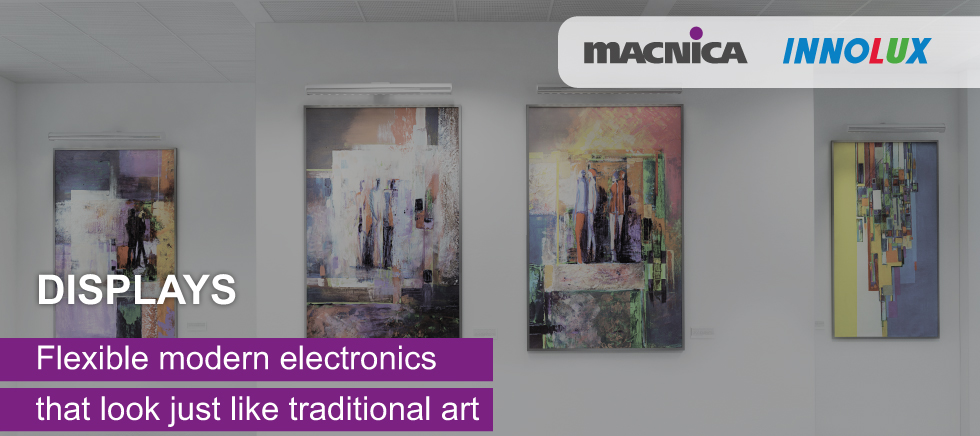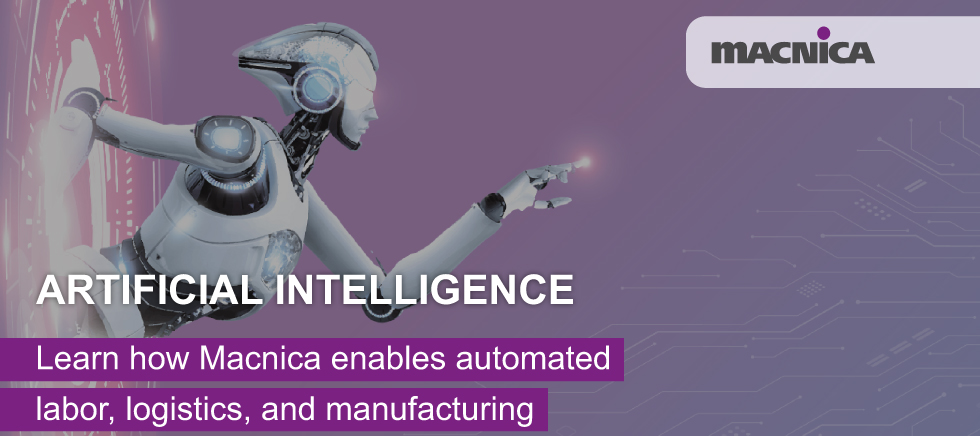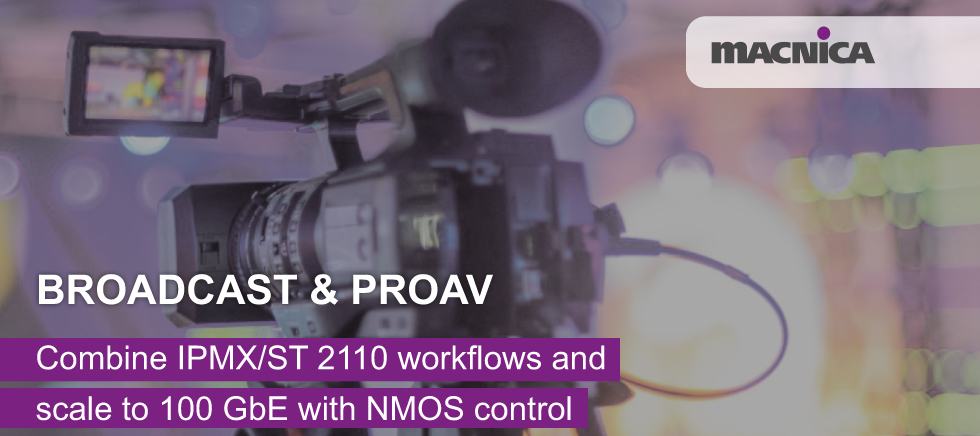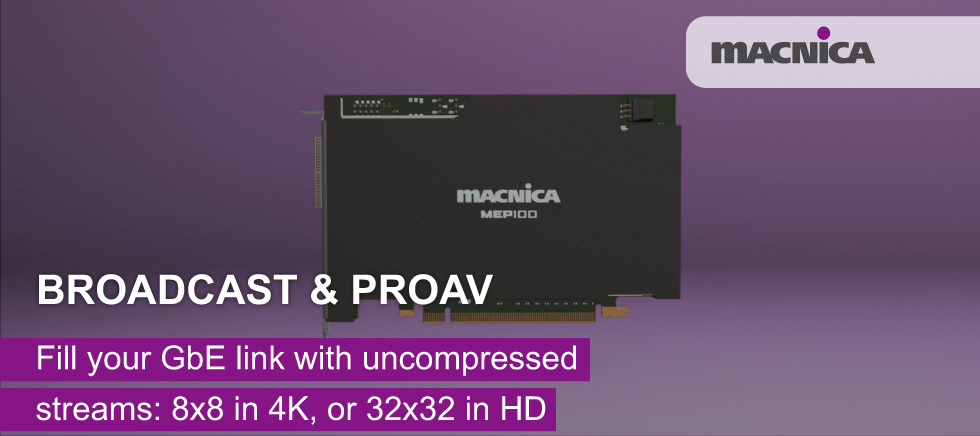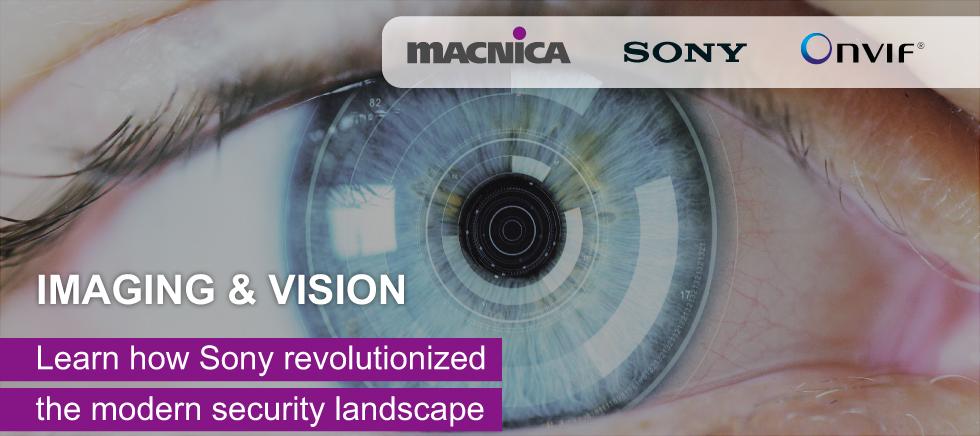The MEP100 100GbE SmartNIC Meets Apple-Silicon: Why ST 2110 Workflows Feel Native on the Mac
By Andrew Starks, Product Marketing Manager, Broadcast & ProAV Products
At NAB Show this year, we announced something small - but meaningful. The MEP100 SmartNIC, our 100GbE PCIe interface for ST 2110 audio, video, and ancillary data, now supports macOS Sonoma (14.6.1+).
That might sound like a basic checkbox. Another driver. Another platform. But if you’re paying attention to where creative workflows are headed - and how Apple Silicon works under the hood - this one gets more interesting, the deeper you look.
Apple Architecture Meets ST 2110 Throughput
As I was walking the show floor, I found myself at the Softron booth - one of many Mac-based live production solutions on display. What struck me wasn’t just the elegance of their modular, tightly-integrated software platform and tools. It was how much actual throughput the modern Mac platform is capable of handling. Not just in terms of CPU or GPU horsepower, but total system architecture.
We’re talking about a system with:
- Unified memory (no discrete pools for CPU and GPU)
- >800 GB/s of memory bandwidth on the M3 Ultra
- A well-optimized software stack built for real-time creative tasks
When you pair that with the MEP100 - a 100GbE ST 2110 NIC with kernel-bypass drivers, sub-frame DMA, and full ST 2022-7 hitless switching - you get more than high throughput. You get a platform that can ingest, process, and output up to 8x 4K60 streams of uncompressed video in real time, with headroom to spare. The Mac doesn’t just handle that load - it absorbs it effortlessly, keeping system latency low and resources free for creative work.
All of it live. All of it in memory. And all of it happening inside the same unified address space.
What Makes It Work
Here’s how the flow looks under the hood:
1. The MEP100’s onboard FPGA parses RTP and PTP, then performs DMA directly into macOS system memory.
2. Those buffers are instantly accessible to CPU, GPU, and Metal-based applications - no PCIe bounce, no copy to VRAM.
3. Tools like Resolve, custom Metal shaders, or even AI inference pipelines can operate directly on that memory, then send it right back out over IP or Thunderbolt.
The result is a zero-copy pipeline that keeps latency low and system overhead lower.
Traditional PC systems with discrete GPUs are extremely powerful - but there’s more bookkeeping involved, and that can add milliseconds as data moves from the NIC to system RAM to GPU VRAM, especially in complex workflows. On Apple Silicon, it’s one step: the buffer is the buffer.
Platform Synergy
We support the Mac, Windows and Linux, and we continue to see strong demand across all three OSes. A lot of facilities run mixed environments, and the MEP100’s cross-platform driver model and SDK (M2S) make that manageable.
Apple’s system design creates a unique fit. The unified memory model. The thermal and power efficiency. The software ecosystem that assumes the GPU is always involved. Together, those make it possible to do more with less - and to rethink where real-time broadcast tasks can live.
The Mac Pro becomes a real-time node on your IP network - ingesting live camera feeds, applying effects or overlays, and sending output straight back to air or storage. All of it happens inside a unified memory space, with the same MEP100 SmartNIC and SDK powering complementary workflows across Windows, Linux, and macOS.
Where This Leads
We’re in early days here, but the road ahead is clear: Apple systems aren’t just creative workstations - they’re becoming viable nodes in the IP media network. Whether you’re building a flypack, a control room, or a hybrid cloud pipeline, Macs now have native access to the same backbone used in broadcast facilities around the world.
And if you’ve built your workflows around Apple software and hardware - if your team lives in Final Cut, or uses Softron for ingest and playout - there’s now a clean, zero-compromise way to connect that creative core to an ST 2110 infrastructure.
That’s the opportunity, and we’re excited to help engineers, developers, and creatives explore it.

